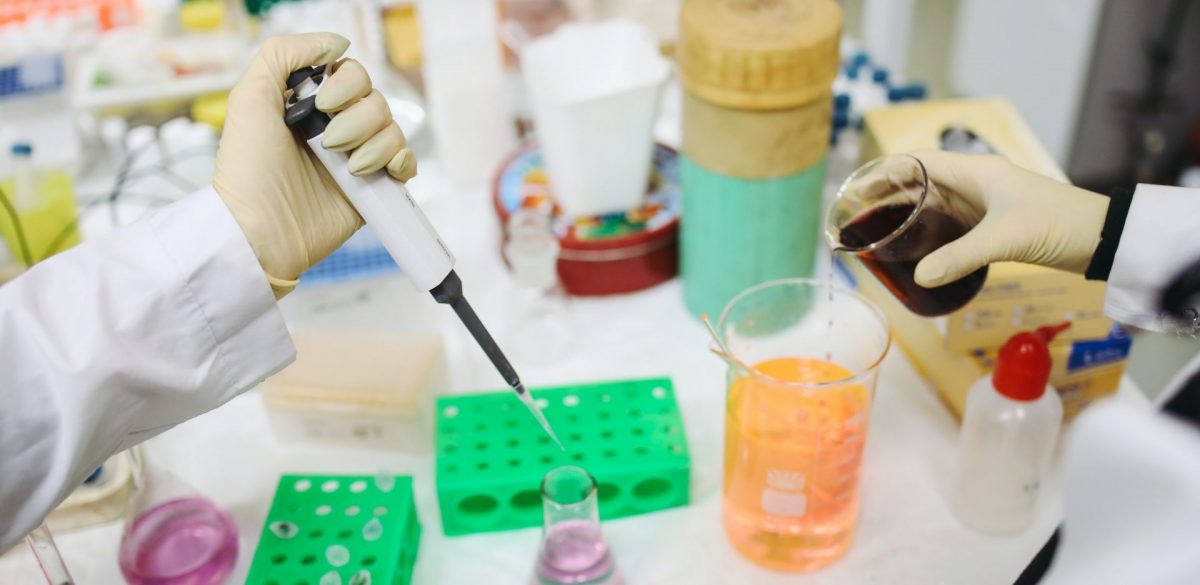Outside the medical community, Edward Jenner is not much known. He should be. About 200 years ago, he injected a boy with an infection similar to smallpox, making the child immune to that virus.
Until that point, smallpox was a scourge, killing nearly a third of its victims, leaving another third blind and the rest with lifelong scars. It was known as the “speckled monster” or more politely as “smallpox” meaning “small scars”. Today, thanks in no small part to Jenner – the father of modern vaccines – smallpox has been completely eradicated.
Now, with the world facing COVID-19, there will be rich pickings for the firm or firms that manage to roll out the first coronavirus vaccine.
The history of vaccines
Centuries before Jenner, China, Turkey and Egypt had all documented stories of smallpox inoculation: Take a blade through a wet smallpox lesion and place the infected matter into the cut skin of the person you wanted to inoculate. The idea was that the patient would suffer a less serious smallpox infection (though some still died).
In his day, Jenner was a renowned doctor and a keen observer of nature. He noticed that an infection called cowpox was similar to – but less dangerous than – smallpox. Jenner volunteered his gardener’s son as guinea pig, inoculating the boy with a cowpox pustule. He watched as the lad developed a fever and then recovered. He then infected the child with a test dose of smallpox. It had no effect, and Jenner concluded that the cowpox infection had provided immunity to smallpox.
How does a vaccine work?
Vaccinations have advanced since Jenner’s day, yet the principle remains the same: Find something that looks like an invader but doesn’t act like an invader. Our immune system reacts just enough to this neutered aggressor to kill it and retain a memory of it. If the vaccination is too weak, our immune system doesn’t bother with it and we don’t develop immunity. If the vaccination is too reactive, then our immune system could overheat and damage us. Rather like Baby Bear in the story of “Goldilocks and the Three Bears”, the porridge (or in this case the vaccine) should be neither too hot nor too cold, but just right.
The three phases of developing a vaccine
Which brings us to vaccines today – the great hope of many in the fight against COVID-19. Here’s how vaccine development typically works: First, it must be shown to work in laboratory animals. Then there is the Phase 1 trial – done on perhaps 50 people to see if it’s safe. The Phase 2 trial comes next and is done on about 1,000 people to show that it is strong enough to be effective. The final Phase 3 trial is done on at least 10,000 people to test how effective and safe it is in a broader spectrum of society. Finally, the vaccine must be approved by the medical regulator.
This process generally takes 10 years, costs about US$500 million and could fail at any point. The current record for getting a vaccine to market is four years – that was for the mumps vaccine – so it’s little surprise that demands that a vaccine for coronavirus be rolled out by the end of this year has raised eyebrows.
But that doesn’t mean it’s impossible: With enough collaboration and cash, it might be done.
So, let’s look at this race: Of the 160-odd vaccines in development, my three front-runners have followed different paths in modulating our immune systems.
The first of these – Coronavac – is from the Chinese company Sinovac.
How does it work? Sinovac grows the SARS-CoV-2 virus, kills it and then injects the dead (and thus harmless) virus as a vaccine. Our immune system recognizes it and reacts to it. This tried and tested method of delivery is famously used in the polio vaccine, which has rid most of the world of that disease in six decades.
What is good about it? These types of vaccine are relatively safe as the virus is dead.
What could go wrong? Lots of live vaccine needs to be handled. As Professor Jonny Peter from the University of Cape Town explains: “One needs to grow entire batches of the live virus and then kill them to make the vaccine. This carries risks and may be a slow and cumbersome process.”
How is it doing? Promising. Coronavac has been six months in the making and has already started its Phase 3 trial in Brazil1.
The second is Moderna from the U.S.
How does it work? Moderna employs a technique used in cancer vaccines, but never in a virus. It delivers a piece of viral messenger RNA (mRNA) to our cells. The mRNA is transported in tiny boats called nanoparticles that gain entry to our cells. The cells read the RNA and build the viral protein that it codes for. Our immune system sees this foreign protein, attacks it and then hopefully attacks any other virus that carries that same protein calling card.
What is good about it? It doesn’t introduce an entire virus, so the immune system should not over-react to the vaccine, which means a low chance of nasty reactions2. Because this vaccine is simple to make, it could be rolled out quickly and at scale once approved.
What could go wrong? It’s not been used successfully against viruses. Look at it this way: It’s a bit like going fishing with bait you’ve not used, to catch a fish you’ve not caught before – it might work, but there are a lot of unknowns.
How is it doing? Promising. By the end of July 2020, Moderna was moving into its Phase 3 clinical trial with 30,000 people across the U.S. This will only be completed in 18 months, but if preliminary results are good it might get early approval to go to market.
The third contender is from Oxford University in the UK.
Working from the Jenner Institute in Oxford, it is headed by Professor Sarah Gilbert, who is so confident in her vaccine that her three adult children volunteered to be in the initial human trial.
How does it work? This is a “vector vaccine”, meaning that a weak adenovirus is used as the vector, or transporter, of the coronavirus. The adenovirus carries coronavirus RNA inside it, plus a coronavirus spike protein RNA. This cleverly disguised viral vector looks like a coronavirus, walks like a coronavirus and even quacks like a coronavirus – but it’s not a coronavirus.
What is good about it? Because the adenovirus introduces both spike proteins and mRNA from the coronavirus, it should generate a comprehensive response from our immune system. This is a relatively easy vaccine to roll out on a big scale. And, should the virus mutate, the vaccine could easily be tweaked.
What is bad about it? Because this uses a live virus, there is a chance that the immune system could over-react – as happened in a trial 20 years ago, when a trialist died. However, vectors have greatly improved since then, and Professor Gilbert is confident that she has a winner.
How is it doing? Oxford is at the head of the competition having started its Phase 3 trials in the UK, South Africa and Brazil. The plan is to have preliminary results by October.
There are other contenders. Russia has claimed first place with its Sputnik V vector vaccine. However, because it has not come close to completing its trials, the authorities there have faced criticism for marketing it before it is proven safe. Sinopharm in China has a vector vaccine that it says will be ready in October this year. However, at a cost of US$145, it will be out of the reach of most.
And the winner is?
It’s too early to say. And, as Professor Jonny Peter says, the world will likely see and need more than one successful coronavirus vaccine come to market. That makes sense from a distribution sense given that the vaccine must be rolled out to eight billion people – an unprecedented logistical challenge. If nothing else, the efforts underway are a reminder of how far we’ve come since Jenner placed the cowpox virus into the arm of a child two centuries ago.
References:
1China’s Sinovac Biotech begins Phase-3 trials of Coronavirus vaccine candidate in Brazil. Hospimedica. (July 2020). See: https://www.hospimedica.com/covid-19/articles/294783405/chinas-sinovac-biotech-begins-phase-3-trials-of-coronavirus-vaccine-candidate-in-brazil.html
2Roberts J. Five things you need to know about: mRNA vaccines. Horizon EU Research & Innov. (2020). See: https://horizon-magazine.eu/article/five-things-you-need-know-about-mrna-vaccines.html#

